人教版(2019)选择性必修第一册Unit4 Body Language Reading forWriting课件 (共28张PPT)
文档属性
| 名称 | 人教版(2019)选择性必修第一册Unit4 Body Language Reading forWriting课件 (共28张PPT) | 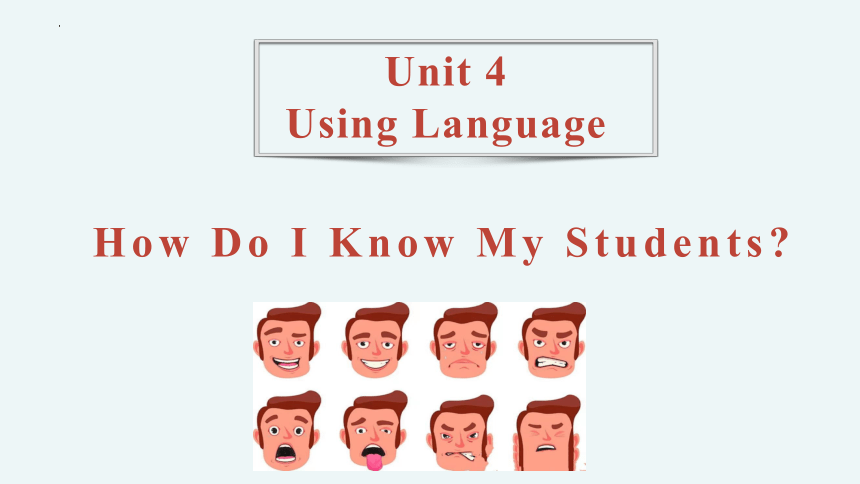 | |
| 格式 | pptx | ||
| 文件大小 | 13.2MB | ||
| 资源类型 | 教案 | ||
| 版本资源 | 人教版(2019) | ||
| 科目 | 英语 | ||
| 更新时间 | 2023-11-08 20:36:22 | ||
图片预览

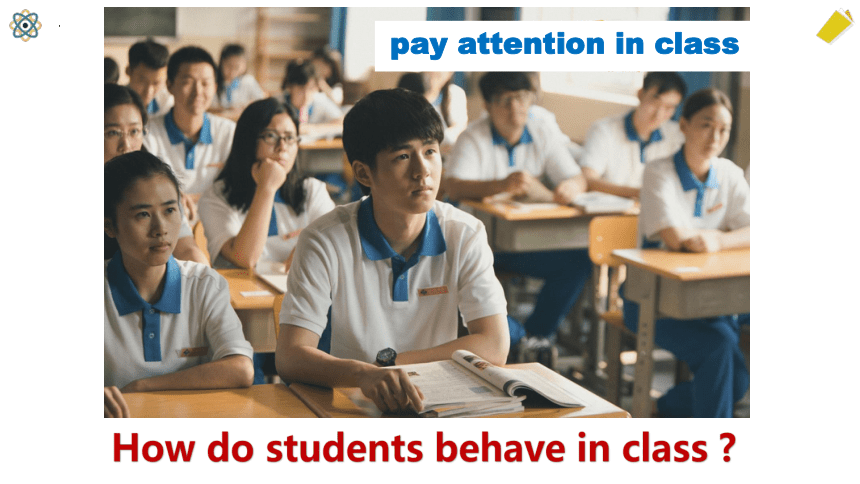
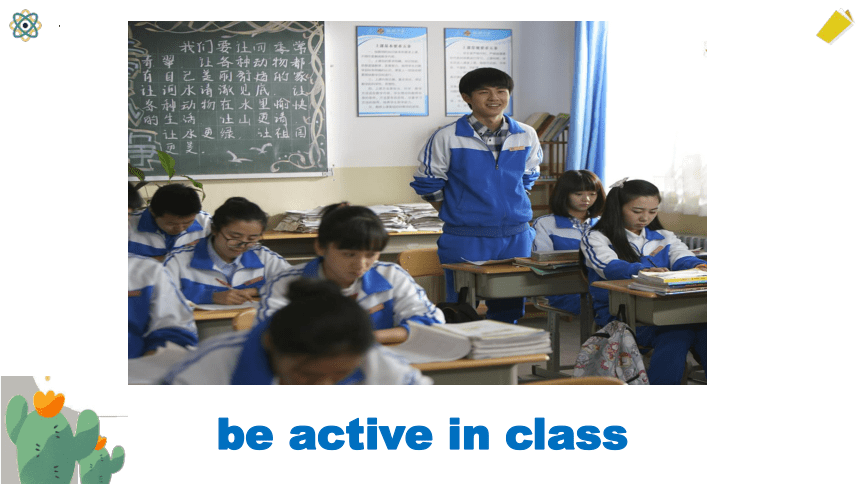
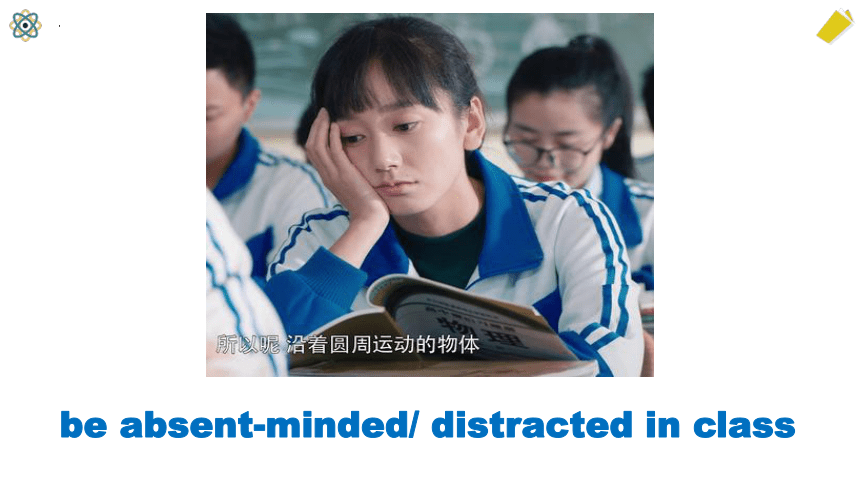

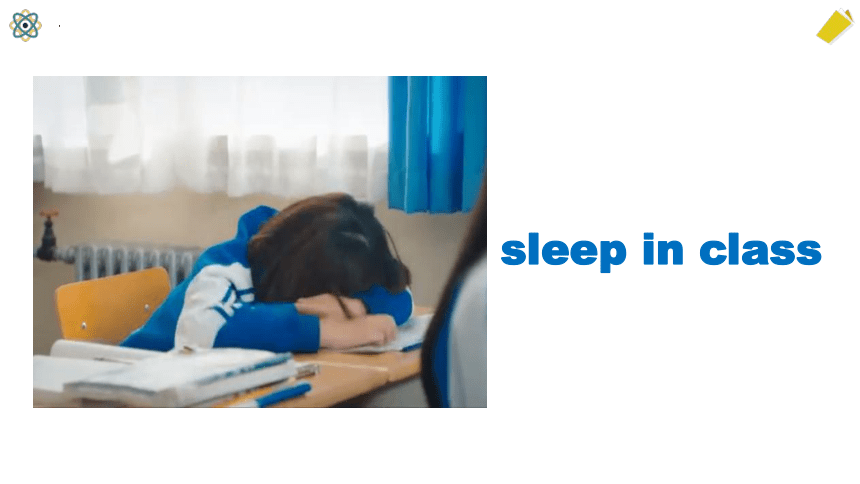
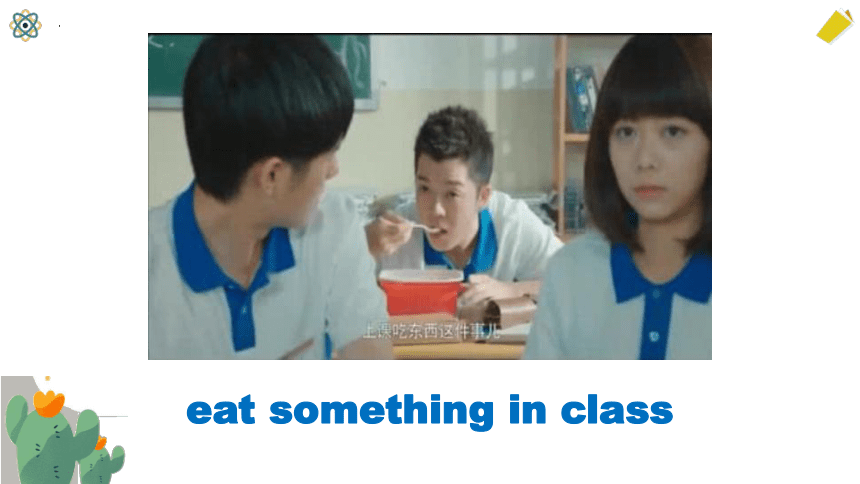
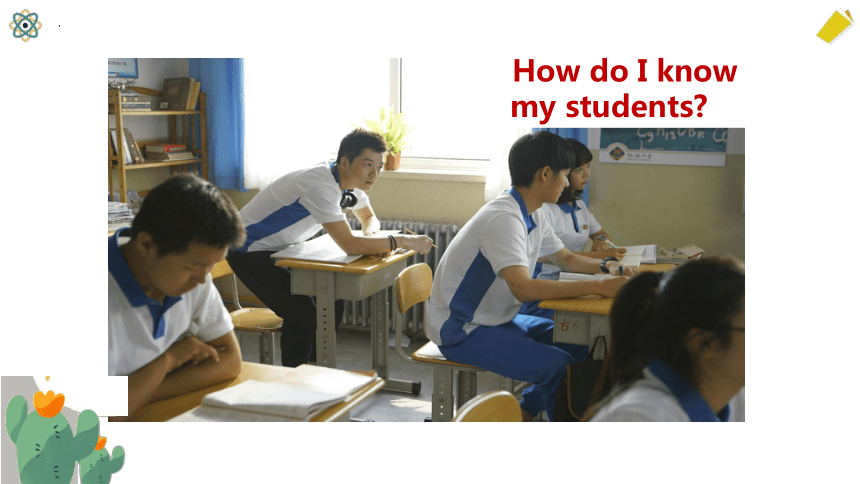
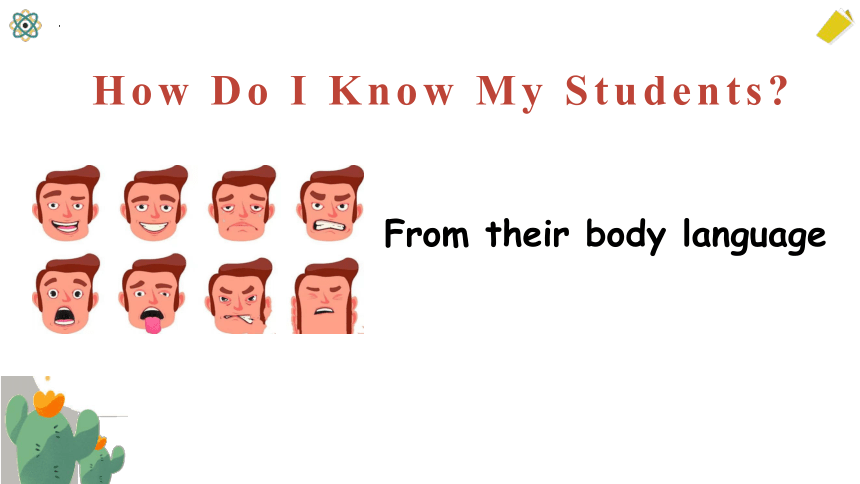
文档简介
(共28张PPT)
Unit 4
Using Language
How Do I Know My Students
pay attention in class
How do students behave in class
be active in class
be absent-minded/ distracted in class
whisper in class
sleep in class
eat something in class
How do I know my students
How Do I Know My Students
From their body language
1. Genre:
2. The main idea of the text:
I can know my students by their classroom body language.
exposition
Pay attention to the first paragragh and the last paragraph
Fast reading: match the main idea of each paragragh
Para.1 & 2 A. Conclusion
Para.3 B. Introduction of the topic
Para. 4 C. Recognize when students are distracted
Para. 5 D. Recognize when students are interested or bored
Para. 6 E. Distinguish when students are troubled
Pay attention to the first sentence and the last sentence
Part 1
Part 2
Part 2
Part 3
Part 1: To introduce Body Languge.
Part 2: The examples of body languge.
Part 3: The importance of body language.
The structure:
总
↓
分
↓
总
Paragraph 3
When students are interested:
look up and make eye contact
lean forward and look at me
When students are bored(Paragraph 3):
have their head lower to look at their watch.
lean their heads together.
look up without eye contact and have the same distant expression on their face.
Match the body language with the meanings.(P3)
___ 1. Looking up and making eye contact ___ 2. Leaning over to look at one’s watch ___ 3. Two friends leaning heads together ___ 4. Leaning forward and looking at the teacher ___ 5. Looking up, but no eye contact, no expression A. very interested
B. bored
C. interested
F. writing notes
H. like they are asleep
C
B
F
A
H
Para. 4-5
When students have their arms crossed in front of their chests and their legs closed and crossed.(Para5):
angry
afraid
anxious
distinguish when studenrs are troubled
frown
sad
worried
hide their faces in their hands
embarrassed or ashamed
afraid of being called by the teacher.
their eyes are red from weeping
having conflicts with others.
Match the body language with the meanings.(P4-5)
___ 6 Looking away ___ 7 Chin on hand, looking out the window ___ 8 Looking down, arms or legs crossed ___ 9 Frowning ___ 10 Hair not brushed, red eyes D sad or worried
E distracted
G serious problems
I daydreaming
J angry, afraid, or experiencing anxiety
E
I
J
D
G
Q: Why does the teacher think body language is important
Para. 6
Our body language in class can tell our teacher if we are listening to him/her carefully.
Our teachers care about not only our scores, but also our behavior and habits.
Try to pay more attention to the class, because teachers are always watching you.
课文考点背诵
1. be interested in 对......感兴趣 2. make eye contact 眼神接触
3. make a joke 开玩笑
4. have a tendency to do sth. 有做某事的倾向
5. be amused by 被...取悦
6. stare out of the window 盯着窗外
7. anxiety n. 焦虑 -- anxious adj. 焦虑的
8. wear a frown 皱眉 9. be afraid of 害怕
10. have conflicts with... 与...有冲突
【课堂检测】
1. I've never felt so ________________ (embarrass) in my life!
2. People have a growing____________(tend) to shop online.
3. He seemed ____________ (anxiety) about the meeting.
4. He had to _____________ (把...放低) his head to get through the door.
5. Sometimes, reality and fantasy are hard to ____________ (区分).
6. You should be ______________ (羞愧) of your behaviour.
7. Local people have reacted angrily _______ the news.
8. Many of these ideas have conflicts ___________ each other.
with
embarrassed
tendency
anxious
lower
distinguish
ashamed
to
educator
what
in
confused
implies
friends
probably
looking
their
to understand
writing
假如你是李华,你的英国朋友Tom将来中国旅游,发邮件向你询问中英日常生活肢体语言的异同。请你回复邮件,内容包括:
1.表示欢迎;
2.不同点:在中国,与长辈交谈时,低头避免直视等;
3.相似点:见面握手,微笑等。
Writing
注意: 1. 词数80左右;
2. 可以适当增加细节,以使行文连贯。
Dear Tom,
_________________________________________________________________________________________________________________________________________________________________________________________________________________________________________________________________
Yours,
Li Hua
Writing
布局谋篇
第一步:审题
时态:根据提示,时态应为一般现在时和一般将来时。
结构:总分法
要求:1.表达欢迎
2.告知相关情况
不同点:在中国,与长辈交谈时,低头避免直视等;
相似点:见面握手,微笑等。
佳作赏析
Dear Tom,
Hearing that you will come to China, I am writing to show my warmest welcome.
Body language varies from culture to culture. For example, when talking to the elderly in China, we usually look down to avoid eye contact as a sign of respect. On the other hand, some gestures have the same meaning. We favour shaking hands, smiling or nodding the head to greet someone, just as you do.
I deeply hope my introduction can be of great help to you.
Yours,
Li Hua
THANKS!
Unit 4
Using Language
How Do I Know My Students
pay attention in class
How do students behave in class
be active in class
be absent-minded/ distracted in class
whisper in class
sleep in class
eat something in class
How do I know my students
How Do I Know My Students
From their body language
1. Genre:
2. The main idea of the text:
I can know my students by their classroom body language.
exposition
Pay attention to the first paragragh and the last paragraph
Fast reading: match the main idea of each paragragh
Para.1 & 2 A. Conclusion
Para.3 B. Introduction of the topic
Para. 4 C. Recognize when students are distracted
Para. 5 D. Recognize when students are interested or bored
Para. 6 E. Distinguish when students are troubled
Pay attention to the first sentence and the last sentence
Part 1
Part 2
Part 2
Part 3
Part 1: To introduce Body Languge.
Part 2: The examples of body languge.
Part 3: The importance of body language.
The structure:
总
↓
分
↓
总
Paragraph 3
When students are interested:
look up and make eye contact
lean forward and look at me
When students are bored(Paragraph 3):
have their head lower to look at their watch.
lean their heads together.
look up without eye contact and have the same distant expression on their face.
Match the body language with the meanings.(P3)
___ 1. Looking up and making eye contact ___ 2. Leaning over to look at one’s watch ___ 3. Two friends leaning heads together ___ 4. Leaning forward and looking at the teacher ___ 5. Looking up, but no eye contact, no expression A. very interested
B. bored
C. interested
F. writing notes
H. like they are asleep
C
B
F
A
H
Para. 4-5
When students have their arms crossed in front of their chests and their legs closed and crossed.(Para5):
angry
afraid
anxious
distinguish when studenrs are troubled
frown
sad
worried
hide their faces in their hands
embarrassed or ashamed
afraid of being called by the teacher.
their eyes are red from weeping
having conflicts with others.
Match the body language with the meanings.(P4-5)
___ 6 Looking away ___ 7 Chin on hand, looking out the window ___ 8 Looking down, arms or legs crossed ___ 9 Frowning ___ 10 Hair not brushed, red eyes D sad or worried
E distracted
G serious problems
I daydreaming
J angry, afraid, or experiencing anxiety
E
I
J
D
G
Q: Why does the teacher think body language is important
Para. 6
Our body language in class can tell our teacher if we are listening to him/her carefully.
Our teachers care about not only our scores, but also our behavior and habits.
Try to pay more attention to the class, because teachers are always watching you.
课文考点背诵
1. be interested in 对......感兴趣 2. make eye contact 眼神接触
3. make a joke 开玩笑
4. have a tendency to do sth. 有做某事的倾向
5. be amused by 被...取悦
6. stare out of the window 盯着窗外
7. anxiety n. 焦虑 -- anxious adj. 焦虑的
8. wear a frown 皱眉 9. be afraid of 害怕
10. have conflicts with... 与...有冲突
【课堂检测】
1. I've never felt so ________________ (embarrass) in my life!
2. People have a growing____________(tend) to shop online.
3. He seemed ____________ (anxiety) about the meeting.
4. He had to _____________ (把...放低) his head to get through the door.
5. Sometimes, reality and fantasy are hard to ____________ (区分).
6. You should be ______________ (羞愧) of your behaviour.
7. Local people have reacted angrily _______ the news.
8. Many of these ideas have conflicts ___________ each other.
with
embarrassed
tendency
anxious
lower
distinguish
ashamed
to
educator
what
in
confused
implies
friends
probably
looking
their
to understand
writing
假如你是李华,你的英国朋友Tom将来中国旅游,发邮件向你询问中英日常生活肢体语言的异同。请你回复邮件,内容包括:
1.表示欢迎;
2.不同点:在中国,与长辈交谈时,低头避免直视等;
3.相似点:见面握手,微笑等。
Writing
注意: 1. 词数80左右;
2. 可以适当增加细节,以使行文连贯。
Dear Tom,
_________________________________________________________________________________________________________________________________________________________________________________________________________________________________________________________________
Yours,
Li Hua
Writing
布局谋篇
第一步:审题
时态:根据提示,时态应为一般现在时和一般将来时。
结构:总分法
要求:1.表达欢迎
2.告知相关情况
不同点:在中国,与长辈交谈时,低头避免直视等;
相似点:见面握手,微笑等。
佳作赏析
Dear Tom,
Hearing that you will come to China, I am writing to show my warmest welcome.
Body language varies from culture to culture. For example, when talking to the elderly in China, we usually look down to avoid eye contact as a sign of respect. On the other hand, some gestures have the same meaning. We favour shaking hands, smiling or nodding the head to greet someone, just as you do.
I deeply hope my introduction can be of great help to you.
Yours,
Li Hua
THANKS!
